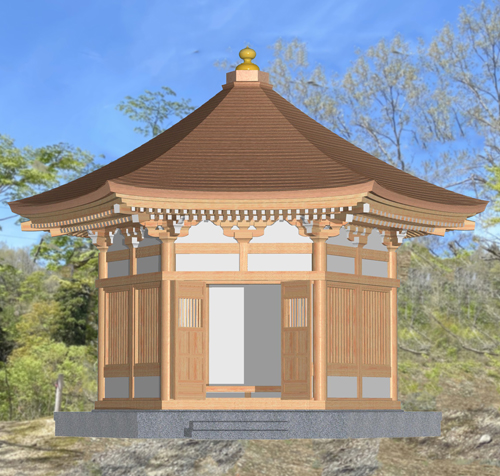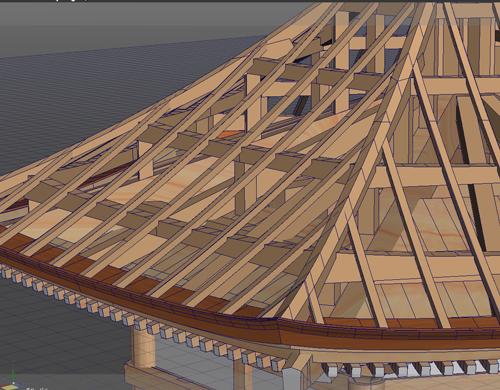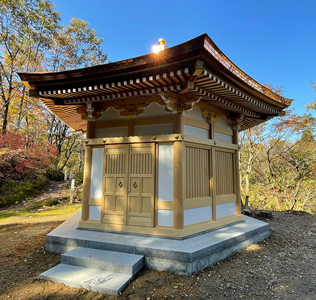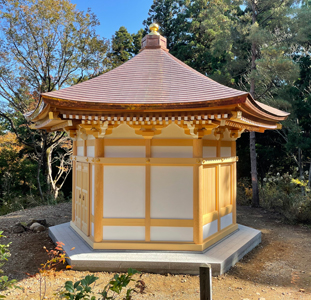| He places the concepts of shrine and temple design, such as the techniques of hand processing of wood by craftsmen, wood splitting, and the art of using the carpenter's square, in the former category, and the field of information and communication technology (ICT), such as the methods of creating blueprints and construction drawings and the means of representing buildings by computer, in the latter. In particular, he says that in recent years, there has been a trend to encourage the use of advanced ICT such as BIM, DX, and XR, which has led him to focus on 3D modeling of Japan's world-class shrine and temple architecture.
Mr. Ueno focused on NURBS to express the unique curves of the roofs of shrines and temples, and the many combinations of curved surface parts used in roofs. He had been using an older version of Shade3D, but when NURBS modeling function was implemented as one of the new features of Shade3D Ver.17 Professional version, he invested in Shade3D Ver.18 Professional version in 2018. After realizing the software’s user friendliness, he established his current stance of using Shade3D as his Mr. Takahashi and Mr. Okino, who were inspired by the 3D models created by Mr. Ueno, invested in Shade 3D Ver.19 and Shade3D Ver.20 respectively, and all three craftsmen are active Shade3D users to this day. This is how the company a style that uses Shade3D as the base software for T&I Modeling came to be.
While they have been constructed actual shrines and temples, they also produced 3D models of them, and provided the completed images, videos, 3D materials, etc. for involved designers and construction companies, as well as temples and supporters of the temples. At that time, for example, it is assumed that it would be used as a model for full-scale drawings and construction in builders, and as a tool to support the understanding of drawings for craftsmen. Based on their long experiences, 3D models are produced from a perspective of actual contractors and are useful to almost all stakeholders in the construction process.
Since the formation of T&I Modeling, they have created various 3D models using Shade3D, and one of the distinctive use cases is the model of "Seven-Storied Pagoda" requested by a Kokubunji Temple. Since there were few materials of its building, they spent nearly 10 months to create a huge amount of 2D detailed drawings and full-scale roof maps like actually rebuilding, during their normal work. In addition, when building "Rokkakudo" that Mr. Okino was working on, they produced a full-scale drawing and 3D models to draw the curve of roof members for construction shops and videos that shows the inside and outside perspective diagrams and the whole picture for designers. It is used for meetings and checks between related parties through the design and construction stages. In addition, they started to produce 3D models to support local desires to rebuild the former "castle". While the three of them are investigating wooden shaft assemblies, fine parts, and tiles so that they can withstand historical research, they are creating a 2D overall figure.
"The 'grinding', 'scraping', and 'drilling' operation that can be performed using boolean function available in Shade3D is similar to wood processing in terms of feeling and process.", says Mr. Ueno. On the other hand, Mr. Takahashi focuses on the possibility of using Shade3D in architectural education. Mr. Okino also explained the effectiveness of Shade3D as a tool to improve communication among people involved in a project.
|
|
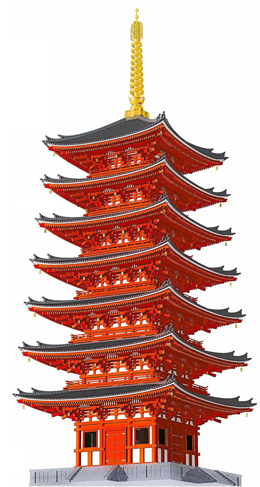 |
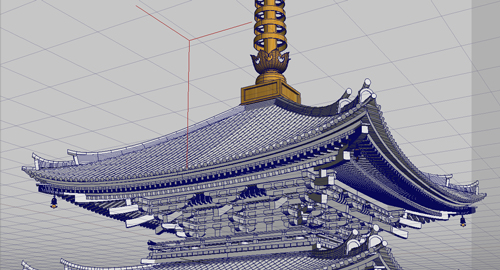 |
| ▲The Seven Storied Pagoda, expressed in 3D to the finest detail. |
|



